Your dog might be screaming on the inside—while wagging its tail.
That’s the tricky thing about anxiety in dogs. It hides in plain sight. A tilt of the head, a sudden yawn, a paw lift—things we brush off as quirks could actually be red flags.
Before the chewing, barking, or hiding begins, dogs give us subtle clues. And most of us miss them. Not because we don’t care—because we don’t know what to look for.
This post pulls back the curtain on 15 quiet signals your dog may be struggling. Some will surprise you. Others will break your heart. But they all offer one powerful gift: a chance to step in before anxiety takes over.
Pacing and Restlessness
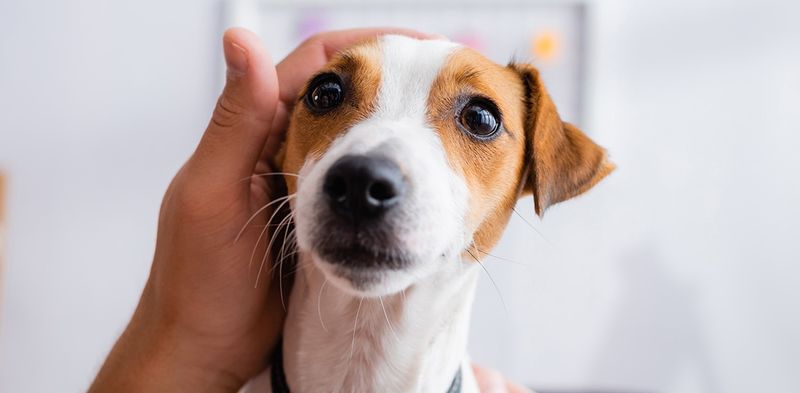
Imagine your dog as a tiny, furry explorer, constantly pacing around the house. This restlessness is not merely a quest for adventure. It could be a sign of underlying anxiety. Dogs often pace when they are unsure or stressed.
Pay attention if the pacing becomes relentless or occurs at unusual times. This behavior can be a coping mechanism for anxiety, much like how some people fidget. If your dog’s pacing persists, it may be time to investigate further.
Interestingly, pacing can also signal discomfort or a need for more physical activity.
Excessive Licking

Picture a dog with an insatiable need to lick, as if trying to uncover hidden treasures beneath its fur. This behavior is more than just a grooming habit; it’s often a self-soothing action. Dogs may excessively lick their paws or other areas when anxious.
While occasional licking is normal, excessive licking might lead to skin irritations or infections. Keep an eye on this behavior, as it can be an early indication of stress or anxiety.
Excessive licking can also be associated with allergies, so a vet consultation may be necessary.
Yawning and Panting
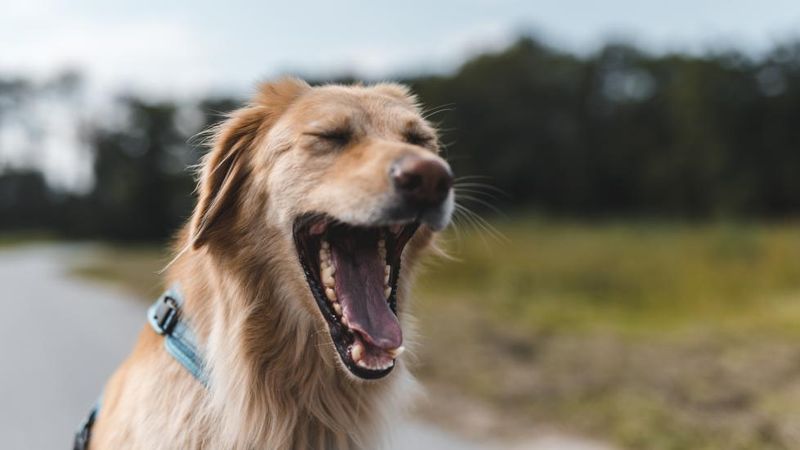
In the world of dogs, a yawn isn’t just a sign of sleepiness. Frequent yawning can indicate stress, a subtle whisper of their inner turmoil. Panting, especially when not hot, is another sign.
These actions can serve as calming signals, a way for dogs to soothe themselves. If your dog is yawning or panting more than usual, consider what might be causing them anxiety.
Interestingly, dogs often yawn in response to human yawns, showcasing their empathetic nature and strong bond with us.
Avoidance and Hiding
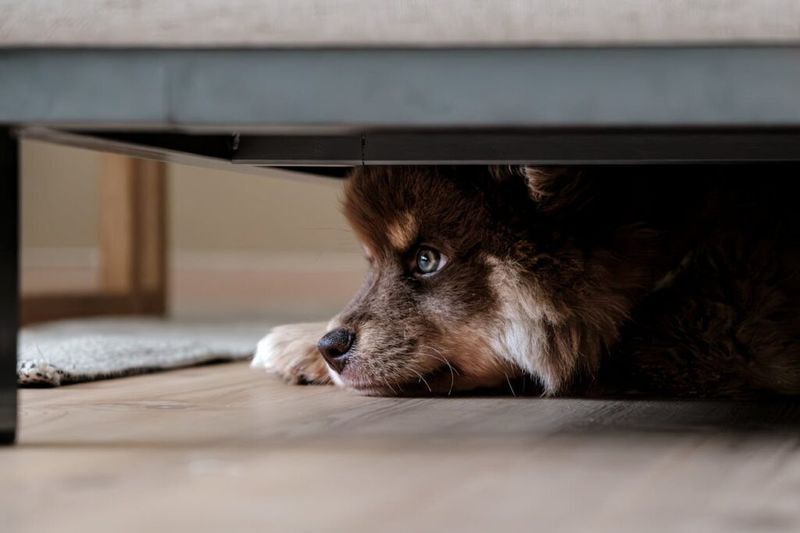
Have you noticed your dog retreating to quiet corners more often? Avoidance or hiding is a silent plea for solitude, a reaction to feeling overwhelmed. Dogs may hide under furniture or in rooms away from the commotion.
This behavior can be your dog’s way of coping with anxiety, seeking comfort in solitude. It’s essential to observe if this becomes a frequent occurrence.
A sudden increase in hiding can indicate that something in their environment is causing stress, urging us to address the issue promptly.
Destructive Chewing

Chewing on your favorite shoes or furniture might seem like a destructive habit, but it can be a cry for help. Dogs often resort to chewing when anxious, finding comfort in the repetitive action.
This behavior can be particularly common when dogs are left alone, signaling separation anxiety. Consider providing chew toys or addressing the root cause.
Destructive chewing is also a sign of boredom, so engaging your dog in activities might help alleviate this behavior.
Increased Barking
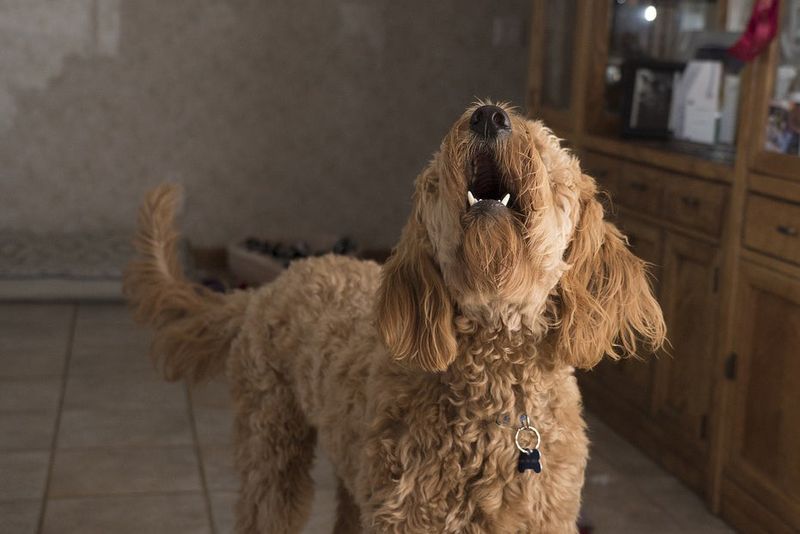
Imagine your dog as the neighborhood watchdog, barking at every passerby. While some barking is normal, an increase can be an alarm bell for anxiety.
Dogs may bark excessively when they feel threatened or insecure. This behavior serves as both a warning signal and a way to express their unease.
It’s essential to identify triggers for excessive barking and work on calming techniques or training to help your dog feel more secure.
Frequent Urination
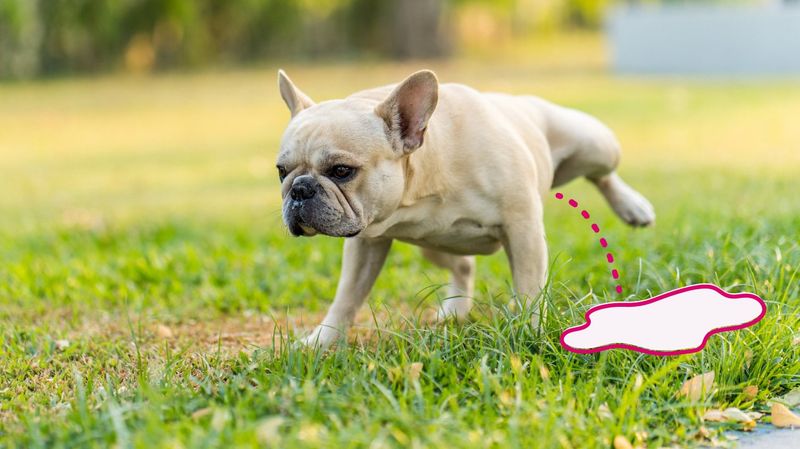
Imagine a dog that suddenly forgets its house-training. Frequent urination indoors can be more than a mere accident; it could be a sign of anxiety.
This behavior is often seen in dogs experiencing separation anxiety, as they struggle with being left alone. It’s crucial to differentiate between medical issues and anxiety-induced urination.
If your dog is healthy but still having accidents, it may be time to explore the underlying cause, focusing on reducing stressors in their environment.
Loss of Appetite
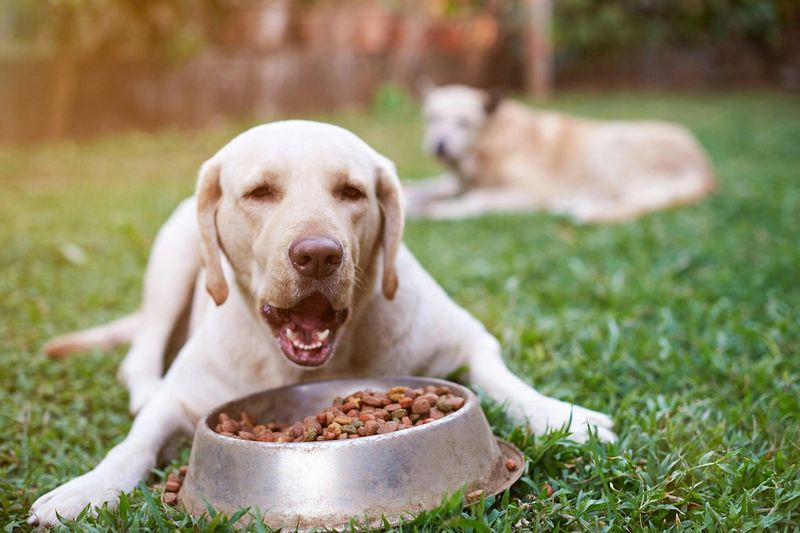
Imagine your once ravenous dog now turning away from their favorite meal. Loss of appetite can be a subtle hint of anxiety, as stress can suppress hunger.
Pay attention if this change in eating habits persists. It might be a signal that something is amiss, deserving of further investigation.
If your dog is consistently avoiding meals, a vet visit is advisable to rule out medical issues and address potential anxiety triggers.
Excessive Drooling
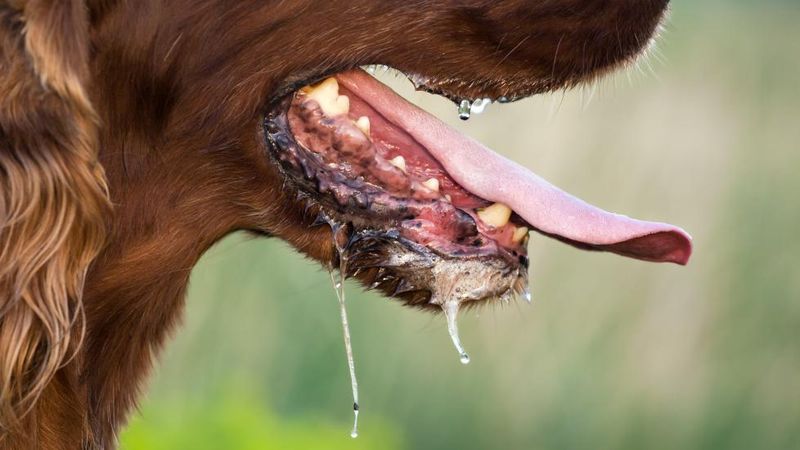
Drooling isn’t just a side effect of seeing a delicious treat. For some dogs, it’s a sign of stress or anxiety. If drooling occurs without the presence of food, it could be worth noting.
Keep an eye on situations that trigger excessive drooling. It might be helpful in identifying specific stressors in your dog’s environment.
Consulting a vet can help determine if the drooling is anxiety-related or due to other health issues.
Aggression or Irritability
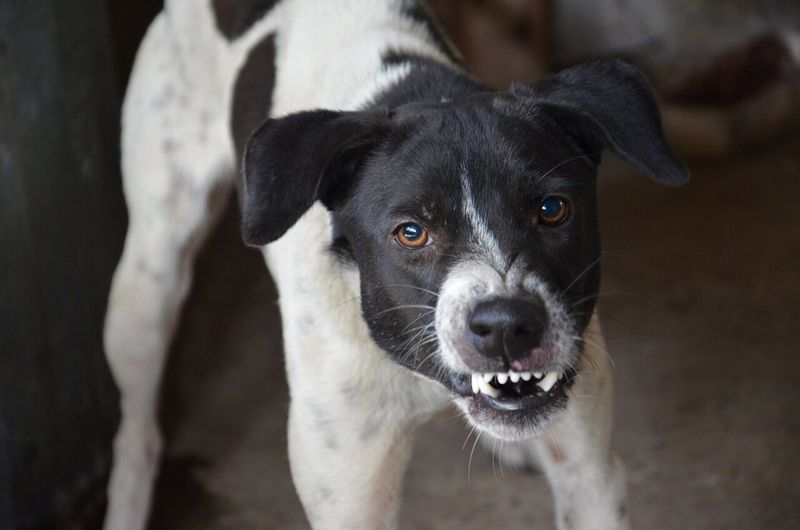
Even the gentlest dogs can show aggression if they’re anxious. If your dog suddenly becomes irritable or aggressive, it could be masking deeper anxiety issues.
Observe their interactions with people and other animals. Changes in behavior might indicate stress, prompting you to investigate further.
Addressing the root cause of anxiety and working on behavioral training can help manage this unexpected aggression.
Tail Between Legs
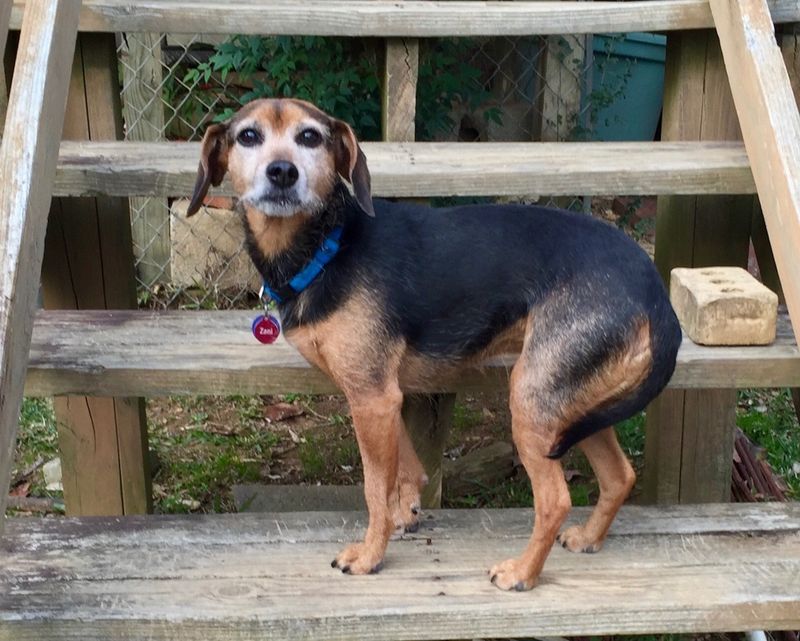
A dog’s tail often tells a tale of its emotions. When tucked between their legs, it’s a silent signal of fear or anxiety. This posture can be seen when dogs are faced with stressful situations.
Pay attention to what might be causing this reaction. Understanding the triggers can help in managing your dog’s anxiety.
If this behavior continues, consider consulting a professional to address potential anxiety issues.
Excessive Shedding
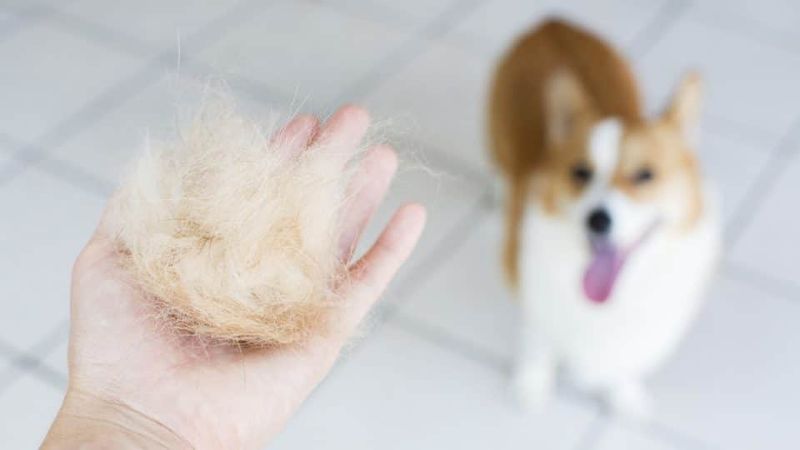
Shedding is a natural process, but when it becomes excessive, it might indicate something more. Stress and anxiety can cause dogs to shed more than usual.
Observe if shedding occurs more frequently during specific events or changes in environment. It could be your dog’s way of expressing discomfort.
Regular grooming and reducing stressors can help manage anxiety-related shedding.
Whining or Whimpering
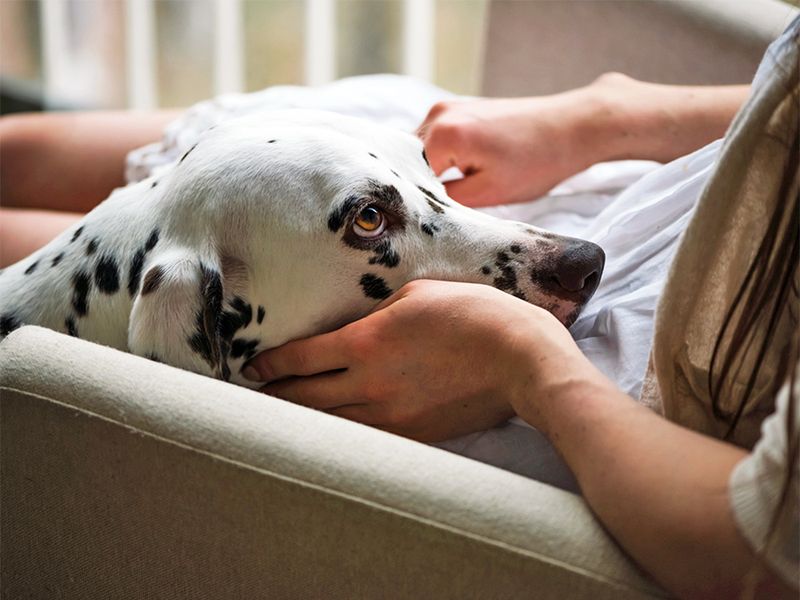
A dog’s whine can be more than just a plea for attention. It might be an expression of anxiety, particularly if it becomes frequent.
Dogs may whine or whimper when they feel stressed or when they anticipate being left alone. This vocalization is a call for reassurance.
Identifying the cause of whining and providing comfort can help in soothing an anxious dog.
Compulsive Behaviors
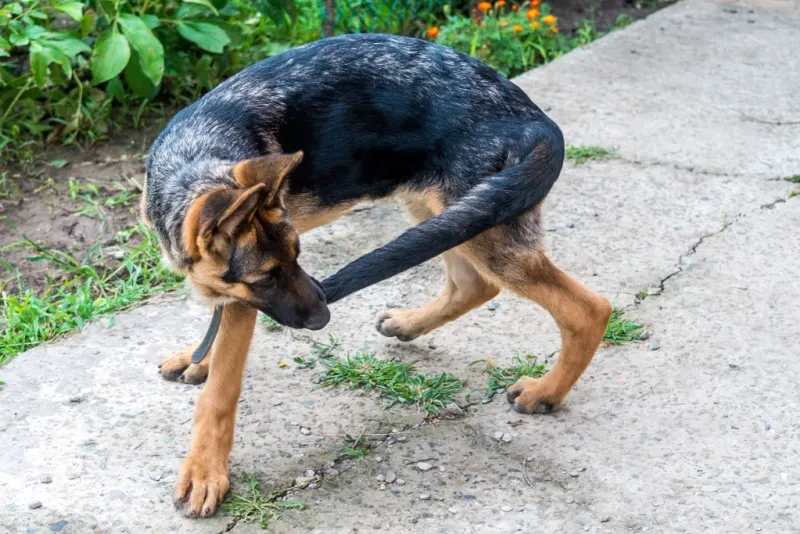
Compulsive behaviors, like tail chasing, are not just playful antics. These actions can be signs of stress or anxiety. Dogs may engage in repetitive behaviors as a coping mechanism.
Observe if these behaviors become persistent or interfere with daily activities. It’s a clue that your dog might be struggling with anxiety.
Addressing the root cause and providing mental stimulation can help curb compulsions.
Dilated Pupils
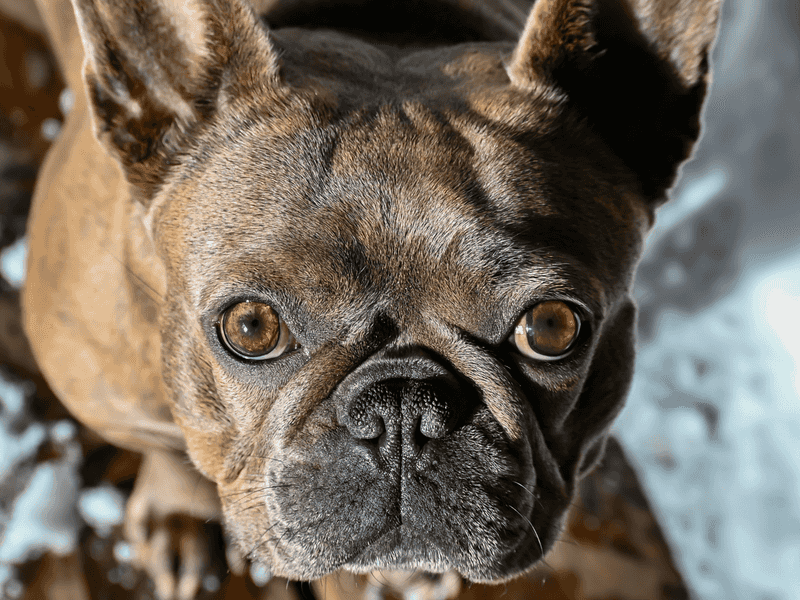
A dog’s eyes can reveal much about its state of mind. Dilated pupils might indicate anxiety, a physiological response to stress.
Observe your dog’s eyes during different situations. It might help identify specific triggers or stressors in their environment.
Consulting a vet can assist in understanding if pupil dilation is anxiety-related or due to other reasons.

